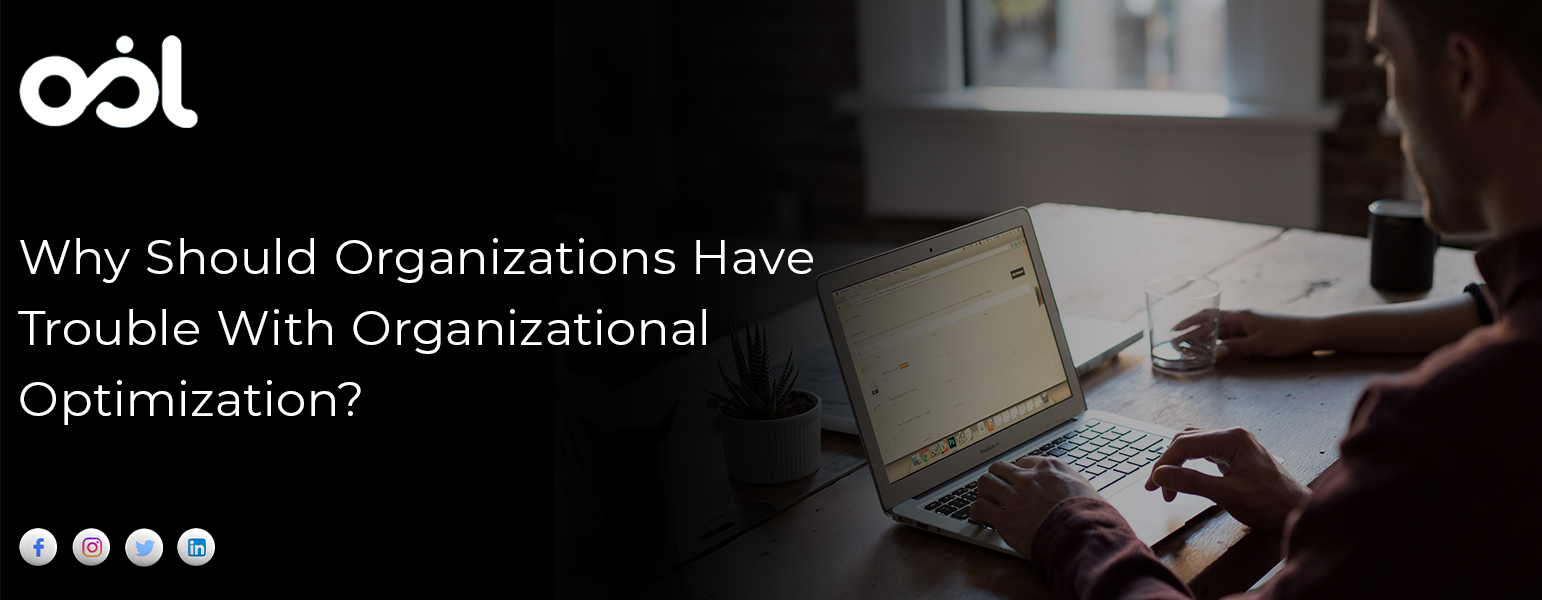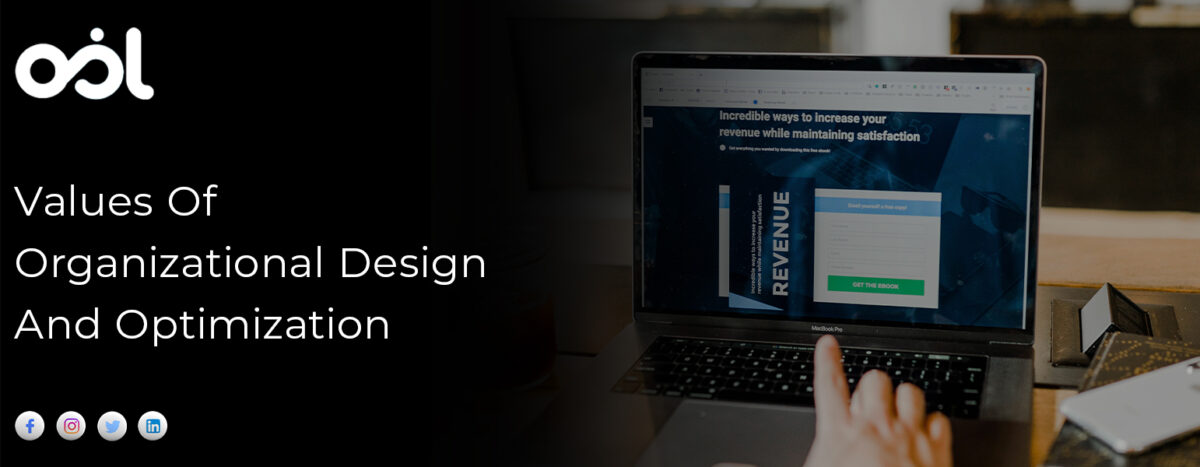This article is all about organizational optimization and design. It begins with the introduction to the discipline’s basic principles, followed by the discovery of the various concepts and themes that Alan Mulally so proficiently used in his rotation of Ford’s fortunes. Let’s dive into the main subject before more delay:
What Is Organizational Optimization?

Organizational optimization can be explained as the influencing and alignment of a company’s resources to observe its stated objectives/goals. Organizational optimization is present at the intersection of greater effectiveness, efficiency and high utilization of all rational and then presently accessible resources at a company’s disposal.
Why Should Organizations Have Trouble With Organizational Optimization?

They are keeping forward in the instantly changing globe. At first, organizations at this moment work in dynamic environments followed by periods of high instability, quickly evolving technology and globalization. Such factors are made even more difficult to handle by a discriminating yet inconsistent global consumer class whose preferences or tastes appear to change over time. Where efficiently exploited though, Organizational Optimization has established itself as a trustworthy driver of short-term and long-term objectives, which organizations may influence to stay ahead of their respective market forces.
The entrance of the future of work. Second, significant organizational structures are changing. Particularly, continuous workplace changes are showing the latest challenges to leaders who must now also be content with motivating and managing geographically distributed employees. Such advanced structures include a greater incidence of remote work both group and individual, higher use of part-time work by companies and an enhancing dependence on temporary and contract worker models. Handling such dispersed groups at utmost cost and performance efficiency is and will consistently be challenging and will need a structured and purposeful reorganization of organizational design.
Attaining strategic advantage. Forthcoming the corporate problem from a diverse perspective, non-accelerated companies playing in arenas based on relatively accelerated competitors risk becoming less competitive and therefore more vulnerable. By speeding up one’s organization, recruiting and organizing the appropriate skill sets and aligning objectives across one’s organization, one’s business will be better positioned to react to unpredicted changes in the marketplace and will be enhanced, able to drive towards corporate preferences instantly and more efficiently.
Acquisitive growth approaches have long been the tradition. Mergers and acquisition, as the consequence of organic growth, is at this moment, the foundation of the global corporate material. And taking the post-merger organizational structure right, aligning human resources, cultures, and workflows is frequently the prime to unlock the forecasted synergies, and value possible of the business mixture.
According to a Harvard Business Review article that transformation leans greatly on research by McKinsey & Co, around 16% of mergers provide soft and hard objectives on schedule. Additionally, 41% take more time than predicted, and only in cases of 10%, the latest organization is value dilutive instead of accretive. Here too, conscious techniques around organizational optimization provide the experienced and trustworthy roadmap for increased success.
The Organizational Optimization

According to practitioners and theorists, organizational optimization needs to focus on four key areas that have been discussed as elements;
(1) Process redesign
(2) Structured workforce development
(3) Improved role clarity
(4) Transparent goal setting
Every aspect can and is frequently implemented in isolation; therefore, the four work enormously better in the shape of the independent collective, making a completely congruent system that can drive utmost performance. A more excessive understanding of each is as mentioned:
Process Redesign

The initial aspect of organizational optimization includes redefining and restructuring presenting workflows to yield a more efficient and effective company. This is more completed by asking the mentioned question, for each basic process and task used by the organization: at what aspects does this redesign process assist our customer? After answering the question sole-mindedly and repeatedly remove tasks where the answer can be negative or opaque. One very instantly removes non-mission important tasks that suck up precious time and resources.
More towards the subject, this process should be executed methodologically in the mentioned operating areas within the company:
(1) Costs
(2) product/service quality
(3) Process efficiency
(4) speed of deliverance or execution.
Workforce Development

Workforce development is considered the most difficult element of the four main areas, even though the most basic to the entire organizational optimization. Workforce development looks to match the appropriate skills to the correct strategic priority and looks to do so at the ideal cost. workers without having the proper skills or whose skills are out of alignment with the company priorities will both need to be retrained or will have to evolve personally as value-adding members of the risk separation or restructured company.
According to my perspective, the trustworthy set of particular steps to go regarding workforce development is as mentioned: firstly, start with the competency assessment such as the tool for recognizing unique or appropriate skills and attitudes to operate an organization, team or unit towards the main objectives. Such behaviours and skills should be evaluated in contrast to the backdrop of both the substitutable capabilities and availability of complementary across the company as well as the personnel’s needs.
It is at the core that the plan to enhance employee capabilities may then be established and executed for amazing in-class outcomes, highest cost-effectiveness and accelerated retention. Once established and widely executed, the competency evaluation process should be a consistent tool utilized regularly to establish and operate success behaviours and desired results across the company.
Role Clarity
As the name depicts, Role clarity is optimized when initially, every employee is clear regarding the priorities of the company, secondly in his unit’s role in attaining it, and thirdly regarding the tests and implementation accountabilities thereto. This involves the appropriate understanding of outputs, expectations, success metrics, timelines and behaviours. Via role clarity, companies normally experience material enhancements in separate and gathered effectiveness and as the secondary advantages are perked up can be measured and rewarded for performance.
Role clarity can be achieved by implementing the following tools:
- Explaining and communicating role responsibilities, description and skill evaluation parameters
- Developing the rules of responsibility via clear communication and documentation of what comprises success
- Making clear goals for every person or group in line with the grander corporate goals and with particular timelines in place and consistent practice, and communication of these three elements of enforcement
Goal Setting
The last but not least prime focus area is setting clear, simple and achievable objectives and aligning each person and unit accordingly. In completing this, designating visual roadmaps have been found that show how the role of each employee, despite the title and level, will sustain the achievement of the objectives or organization has no equal. In the same and improved role clarity, this roadmap was also twice as useful as motivational tools were executed in an ideal way.
Although the already discussed goal alignment can be attained via what the sector is associated with as the goal cascade. Goal cascade refers to the accomplishment by setting the greatest level of corporate objectives first and then working down the company structure so that the departments, divisions, teams and most importantly individuals and their objects are set sole-mindedly.
There are various benefits or Goal cascade in terms of organizational optimization:
- Making sure that all workers are going in a similar direction and their efforts are concentrated on the tasks that the corporate leaders have got the most significant
- Development of cross-team alignment and teamwork provided every employee across groups at each level is widely going towards the same priorities
Without question, top-down objective cascades make the important corporate infrastructure to make sure that all the strategic priorities are fulfilled. Therefore, it is significant that companies do work hard not to become too inflexible and rather enable some leniency where particular employees look to pursue their aims indirectly or instantly accretive to the management level above.
The Role Of Organization Optimization Model Structure
Simply, the organization structure figures out the responsibility and authority within the company. Where structures are not organized in support of execution strategy for organizational optimization, possibilities of success reduce materially. This is also true that regular operations are linked and most vital when an organization is trying to transform from one culture and set of incentives, behaviours, and evaluation designs to another.
Construction Of A Sustainable Optimization Program
The initial rule to establishing an organizational optimization program is that one should not consider it a single-time, short-term solution to what is likely in-depth structural challenges. While the greater advantages can be observed from the sole organizational optimization effort, the actual gains compound in the long term when the appropriate habits become part of the organization’s DNA. Therefore, establishing a culture that enforces embraces and self-propagates continuous optimization is basic to consistent effectiveness.
According to my perspective, establishing a culture of optimization and efficiency can be attained by following the mentioned steps. First and foremost, solicit buying across your company, for example from the higher-level employee to most junior resources, but specifically amongst your corporate influencer. Next, make develop and communicate the latest behavioral needs for the business to successfully transition cultures. After that, strictly incentivize such attitudes across the company. Fourth and lastly, this is the most adept and ambitious amongst you make the short to medium term problems to family engagement at all stages. And then, ongoing to enforce the practice of this latest culture and habits till said habits become the element of the company.
The mentioning are the prime elements important to organizational optimization success culture:
Unlock and translucent Knowledge Sharing: keep in mind that openness is the reason to establish trust and enhance understanding and collaboration across workers.
Association and Teamwork: Nearly associated with knowledge sharing, teamwork speeds up the effectiveness and therefore results across an unchanged resources base.
Top-to-Bottom Cost and Resource Mindfulness: continuously looking for cost improvements enhances the organization profile margin, in transformation making more financial resources for more reinvestment into further human resources, infrastructure and culture shifts to get outcomes.
Honesty and tendency to Change: normally the hardest to achieve, the culture that influences the change at both collective and individual level is very crucial to the grander culture of optimization.
Want to Read more articles? How Hiring A Consultant Can Help Improve Business Performance?

